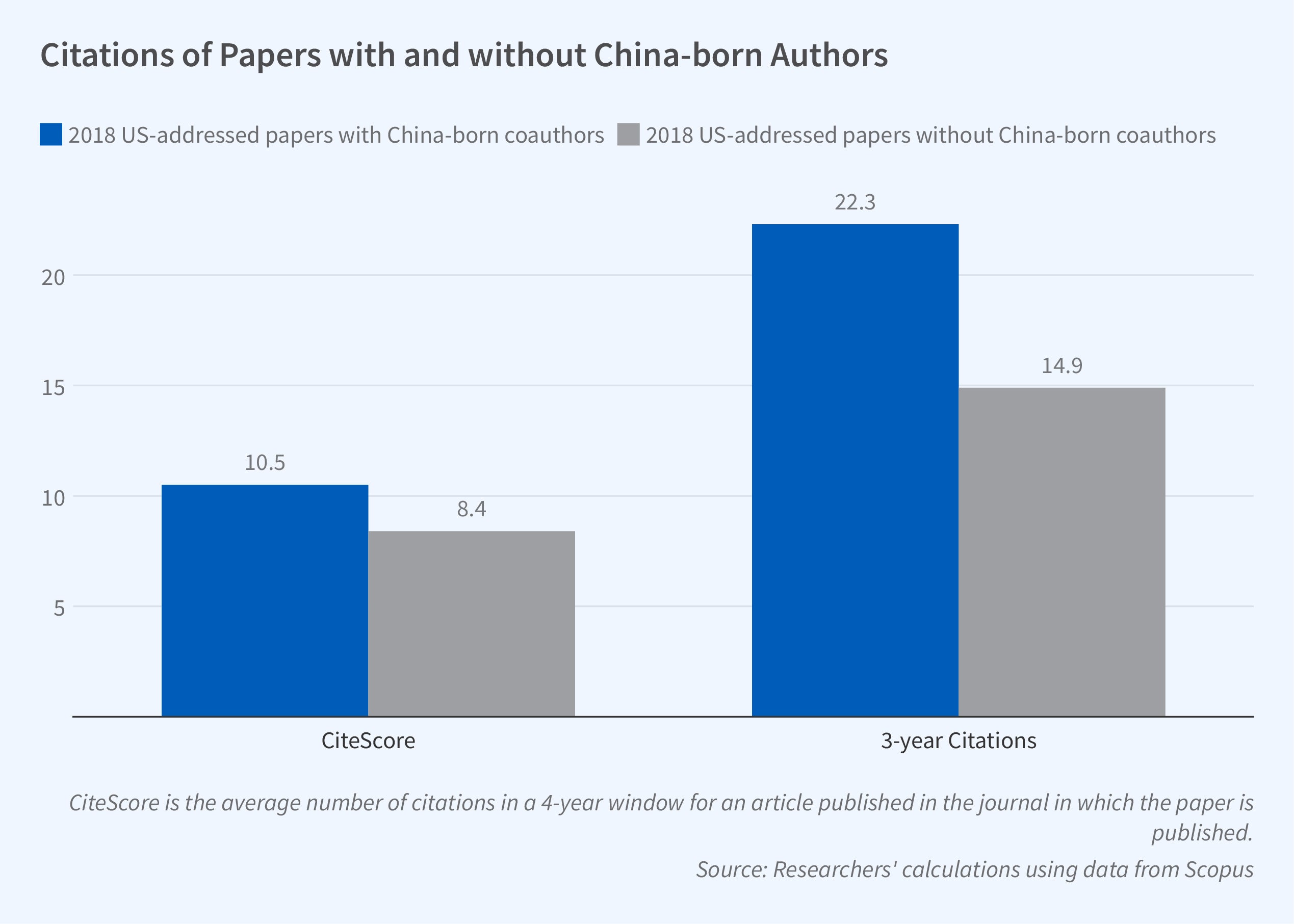Measuring Academic Productivity of Chinese-American Collaboration

Since 2000, large numbers of Chinese citizens have spent time in the United States as students or researchers. In the 2018–19 academic year, slightly more than 35 percent of the roughly 1.1 million international students and researchers in the US were from China. Although some remained in the US, many went back to China.
In Creating and Connecting US and China Science: Chinese Diaspora and Returnee Researchers (NBER Working Paper 31306), Qingnan Xie and Richard B. Freeman use data from the Scopus database on authorship and citations to examine the productivity of the US-Chinese research connection. They focus on English language journal articles published in 2018 in 21 physical sciences.
Chinese-born researchers in the US, as well as those who have worked in the US and returned to China, contribute significantly to the quantity and quality of scientific papers in both countries.
A standard metric for measuring US-Chinese collaborative work has long been the number of coauthored papers with Chinese and US addresses in the group of authors. This study finds, however, that the share of Chinese authors with no address in China was almost four times that of authors with a Chinese address. This suggests that the main way China-born researchers contribute to US science is by working in the US.
Joint authors of papers were grouped based on the addresses they listed on each paper. Chinese “returnee authors” were those born in China who published at least one paper with an address in the US and then published subsequent papers with a Chinese address. “Diaspora authors” were Chinese-named authors writing at a US address. They were classified as having been born in mainland China based on whether their last names were common Chinese last names in the Chinese Ministry of Public Security’s list of Chinese last names, and whether their first names followed the grammar of mainland China’s Hanyu Pinyin translation system. The list of Chinese last names covers 84.8 percent of the Chinese last names in the mainland population.
Because the basic Scopus online files list only authors’ last names and first initials, random samples of 2,000 papers written by authors with ethnic Chinese names were drawn for each group of author addresses, and the complete first names given in this sample of papers were assessed for mainland Chinese origins. This exercise suggests that 78.5 percent of papers resulting from a US-Chinese collaboration have at least one diaspora or returnee author, a percentage that is 1.6 times greater than what would be predicted by chance.
An examination of paper quality using the number of citations three years after publication and CiteScore, a measure of journal impact, found that papers by Chinese diaspora authors averaged 7.4 more citations and 2.1 more CiteScore points than papers by non-diaspora authors. US addressed papers with diaspora authors averaged 22.3 citations compared to 14.9 citations for US addressed papers without diaspora authors, and 10.5 compared to 8.4 CiteScore points. For papers produced by authors with Chinese addresses, papers authored by returnees had 18.8 citations and 5.8 CiteScore points. Authors with Chinese addresses who were not returnees had 13.2 citations and 3.9 CiteScore points.
Papers with both diaspora and returnee Chinese authors had more citations and higher CiteScores than all other papers, suggesting that diaspora and returnee researchers are complementary rather than substitute inputs in the research process. In 2018, 67 percent of articles in the journals Science and Nature had at least one US address, and 43 percent of those had diaspora authors. Of the Science and Nature articles with at least one author who listed a Chinese address, 76 percent of the Chinese authors were returnees.
—Linda Gorman


